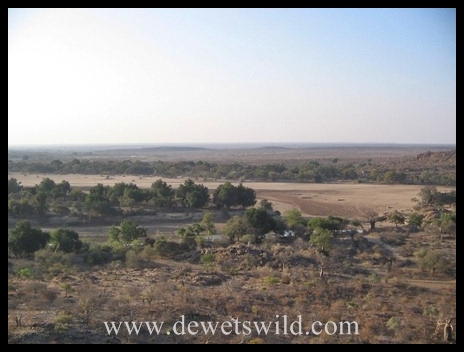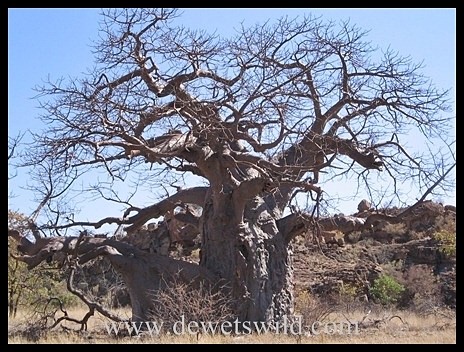Days of torrential rain in South Africa’s northern provinces have caused severe flooding in two of the country’s National Parks – Mapungubwe and Kruger. It appears that our beloved Shingwedzi Rest Camp has been hit exceptionally hard, with about 70 staff members and their families having to be airlifted to safety from there this morning, just hours after the guests staying in the camp were safely evacuated by road. We have seen the Shingwedzi area being flooded in January of 2006, though the camp itself was never inundated then, and can only imagine what these people had to endure overnight. We are immensely grateful for their safety.

Flooding in Kruger National Park – photograph published by SANParks on their facebook page (click on the image for more)
South African National Parks have posted the following media updates:
———————————————————————————————————————————————————————-
Update on the Mapungubwe floods
Date: 21st January 2013
The recent heavy rains experienced in most parts of the country have resulted in the sudden temporary closure of the Mapungubwe National Park and World Heritage (MNP& WH) site. The park is inaccessible from Musina, as roads leading to the area are washed away.
In the last week, most of the roads within the Park were temporarily closed but the subsequent rains that were received in the area over the last 72 hours, caused the park to be closed temporarily until further notice.
According to Divhani Maremba, spokesperson for the MNP&WH, “most clients who were in the Park at the time are currently safely kept at Leokwe camp. Some tourists who were booked in the park last night and today were asked to postpone their holidays. We appeal to all the people to be very cautious when approaching the area.”
“Although some people cannot be contacted through mobile phones because of network coverage, we are constantly monitoring the situation around the park to ensure that we keep everyone informed of developments. Our emergency personnel are also on site trying to prevent potential disaster,” said Maremba.
“More rain is expected over the next two days and we advise all the people with confirmed bookings in the immediate future to contact our reservations office about the status of their bookings as the Park will be temporarily closed until further notice,” she concluded.
More information will be provided in this regard on the SANParks website periodically and on all social media platforms belonging to the organisation.
Issued by:
SANParks
Media enquiries:
Divhani Maremba
Manager: Northern Regions Communications.
Tel: 012 426 5170; Cell: 082 941 9980
Email: divhani.maremba@sanparks.org
Or
Gabrielle “Gabby” Venter
Manager: Media and Stakeholder Relations.
Tel: (012) 426 5065; Cell: 083 825 9435
Email: gabrielle.venter@sanparks.org
——————————————————————————————————–
Update on the heavy rains in the KNP
Date: 21st January 2013
Members of the KNP Disaster Committee met early this morning to assess the impact of the heavy rain in the Kruger National Park (KNP).
Members briefed the committee on their initial inspections and assessments regarding roads, water and sewerage, vehicle fleets, electrical and mechanical as well Protection through the Operation Centre, that has been set up in the Park.
There have been no reports of any major incidents throughout the park except the ones listed below.
Tshokwane: The low-level bridge to staff and ranger houses were reported as over flowing, resulting in personnel being trapped at the picnic site and others at houses, but their lives are not threatened.
Olifants and Sweni trails: Eleven tourists who were trapped on these trails have been safely airlifted to Satara.
Tamboti: The camp is isolated with 8 guests and staff including the section ranger. The water levels are being constantly monitored and a rescue plan will be executed to airlift them to Satara.
Talamati, Biyamiti: The camps have been closed and guests moved to the safety of Satara and Berg-en-Dal.
Houtboschrand: Four patrol rangers and a SANDF unit are stuck in the area, they are in constant contact with the Section Ranger and will be assisted.
Muzanzene: Four guests and one staff member have been air-lifted to safety.
Shingwedzi: All guests were evacuated to Mopani last night. 70 staff members are currently being evacuated.
Roads
H1/1 link road between Skukuza and Pretoriuskop has been closed off due to the heavy current over the low level bridge.
Crocodile Bridge Gate is overflowing and as a result the camp has been isolated and no cars are allowed through.
Lucy Nhlapo: Regional Manager Marula: KNP has reiterated her appeal to all visitors to the Park to stick to the tarred roads as all gravel roads have been closed for safety reasons.
At this stage all is still in order at the Skukuza Rest Camp, the biggest in the Park, with the Nwatsishaka river level slowly rising but flowing steadily, however the low level bridge is currently closed as water is overflowing at high velocity, while the high level bridge is being constantly monitored.
Northern KNP:
The Northern part is still experiencing heavy downpours and the bush camps are still out of bounds. Visitors are still urged to drive only on tarred roads.
Camps and Facilities Closed:
- Sirheni,
- Shimuwini,
- Shingwedzi
- Bateleur
- Boulders
- Tamboti
- Talamati
- Muzanzane
- Biyamiti
- Crocodile Bridge
- Makhadzi Picnic Spot
- All trails camps and Wilderness Safaris
Gates Closed:
- Crocodile Bridge
- Orpen
- Punda Maria
- Pafuri
- Giriyondo Port of Entry
- Pafuri Port of Entry
Roads Closed:
- H1 – 2 Sand River & Sabie Low water bridge – alternatively motorists can use H12
- H1/1 link road between Skukuza and Pretoriuskop has been closed off due to low level bridge overflowing.
- H1-1 – Pretoriouskop to Malelane T-Junction
- H10 – Lower Sabie to Tshokwane
- H7 – Satara to Orpen
- H1 – 9 – Pafuri entrance to Punda
- H15 – Punda Maria to Shingwedzi
- H1 – 6 Letaba to Mopani
- Nwaswitshaka low level bridge.
NB: All gravel roads in the park have been closed off for safety and motorists are requested to stay on tarred road.
“Generally our emergency plans are running accordingly and we’re constantly monitoring the developments, if anyone requires an update, our emergency 24hour hotline is available 013 735 4325. Please call to check on the conditions in the area you intend visiting” concluded Lucy Nhlapo.
Issued by:
SANParks
Media Enquiries:
Reynold “Rey” Thakhuli
GM: Media Liaison
Tel: 012 426 5170; Cell: 073 373 4999
Email: rey.thakhuli@sanparks.org
Ike Phaahla
SANParks Media Specialist
Tel: 013 735 4300; Cell: 0836736974
Email: isaac.phaahla@sanparks.org
Travel and Tourist Enquiries:
Emergency 24 hour hotline: 013 735 4325





























